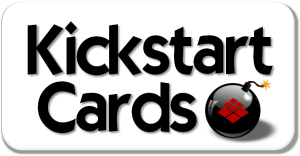What comes to mind when you think about designing coursework and presenting the staff development content to a group you’ve never met?
Perhaps is it nervousness? Dread? Excitement?
Designing for Adults
It can be a challenge to design learning sessions for adults whom you don’t know personally. I’ve experienced the good and the bad when it comes to presenting. Facilitators, trainers, and instructors can face a myriad of challenges that can make them wonder if they are truly being effective.
And not all of the post-training survey questionnaires (aka “smile sheets”) really provide the kind of honest feedback needed for course or delivery improvement.
So what is the best way to configure and design the most effective course content for adult learners? Well, a lot of answers pertain, but probably the most important one is participant engagement.
5 Ways to Engage Adult Learners
Here are five ideas that have helped me engage a crowd:
1) Backward Planning
Decide what it is you want the audience to know, understand, and be able to do at the end of the training. Be very specific with this. Then plan the training so as to maximize time and achieve the goals.
Show others you value their time by not wasting it on unnecessary tasks that don’t lead to a greater and deeper understanding of the topic or training. Comedians are not the only ones who face “tough crowds.”
Don’t be a time waster! Instead, be a bucket filler!
2) Have a Hook
In his book “Teach Like A Pirate,” Dave Burgess emphasizes the importance of capturing a student’s attention with a hook. The same technique is important (and just as effective) when working with adult learners.
The first few minutes of any training determine whether or not you will draw them in-or have them thinking of what to fix for dinner instead. I have used funny videos that relate to the topic, pictures, and even storytelling.
What matters here is that your choice is relevant, brief, and motivating.
For example, recently I delivered a training on progress monitoring and examining data. Not very exciting stuff. So I used storytelling to pique interest. I started the session off with this:
“For the next few minutes, I want you to imagine progress monitoring in a way you never have before. Imagine it as a map. A map you will develop and use on your journey toward maximizing student progress.”
My audience was quietly listening and immediately intrigued by this. They wanted to hear the rest of the story. They wanted to become a part of the story.
———————————————————–
 Kickstart Your Next Training, Meeting, or Conference
Kickstart Your Next Training, Meeting, or Conference
and guarantee Interest, Engagement, and ROI with
Kickstart Values Sorting Exercise! See Video
———————————————————–
3) Respect Learning Styles
Students are not the only ones who fail to flourish with the “sage on the stage” type of instruction. Engage your audience using activities that draw upon multiple intelligences.
- If you present with slides, make sure they have limited wording on them…maybe even only an image. The audience will remember what you have said by having an image to which they can relate the thought. There is no need to include every word you are saying on your slides.
- For every ten minutes, you talk, allow an equal opportunity for participants to engage in dialogue with those around them and with the larger group. Be comfortable in the role of “facilitator.” This is easy to say and most would agree, but often times we fail to do this. Whether due to nerves or time constraints, this seems to be an area we want to cut corners on. Don’t do that.
4) Establish Importance
Nothing helps motivate learners more than seeing a real connection between what is being learned and their own lives. Better still if you can share personal testimony on how you have experienced it.
The National Criminal Justice Reference Center writes this:
“A key principle in adult learning is that the ultimate educator needs to develop an appeal, a “need to know” in the learners—to make a case for the value in their life performance of learning what is offered. At a minimum, this case should be made through testimony from the experience of the instructor.”
5) The Closing
Just as we embrace the importance of closing in our lessons in class, we must also give this consideration when working with adults.
Allow plenty of time for your participants to ask questions, share insights, and debrief with others.
I often encourage people to use social media both during and at the end of the session to share out their own takeaways. This builds ownership and solidifies the learning while allowing you an opportunity to address any lingering questions.
Include a way to further the conversations after the session ends. You may consider using Today’s Meet, your website, or another back-channeling tool. The learning shouldn’t stop at the end of your session.
Focusing on these five simple areas has helped me tremendously in engaging a group and leaving them inspired and informed…and also avoid many rabbit holes along the way.
What strategies have you found particularly effective when delivering adult training? I’d love to connect and share ideas!
**********
Never miss an issue of Linked 2 Leadership, subscribe today.
Learn, Grow & Develop Other Leaders™
———————

Traci Logue is an educator at Northwest ISD
She has twice been named Teacher of the Year
Email| LinkedIn | Twitter | Blog | Web
Image Sources:


Spot on, Traci. Your point about opening with a hook reminds me of a fellow trainer who used to be a science teacher before coming to the corporate world. He taught me this same point. He said when he taught science, he often started with the first part of an experiment and then leave them hanging wanting to know what happened next. The students learned the lesson and then got to do the experiment themselves to see how it ended. I’ve always remembered his lesson to me.
He sounds like a great mentor! Thank you for sharing that!